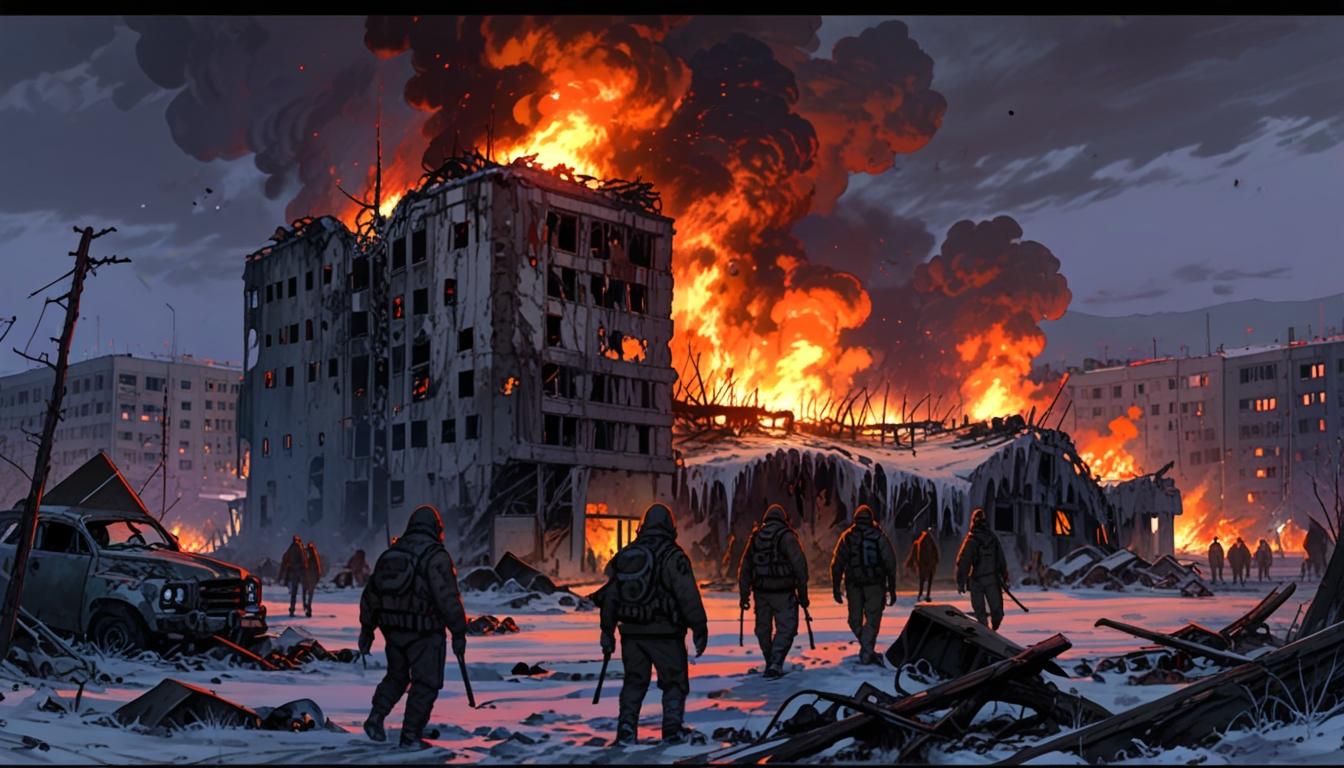British author Mark Lynas has presented a harrowing vision of the aftermath of an all-out nuclear war in his new book, Six Minutes to Winter: Nuclear War and How to Avoid. According to Lynas, the catastrophic conflict could bring civilisation to an abrupt end within just one week of the first bomb detonating, leaving humanity to face a bleak and brutal existence.
Lynas outlines a scenario in which 4,000 nuclear explosions would target multiple countries, unleashing firestorms that consume virtually all flammable material. These blasts alone are expected to kill approximately 770 million people immediately, with countless others succumbing to injuries and radiation. He describes the areas hit directly as devoid of life, littered only with the skeletons and shadows of those who perished in the initial blasts. “Given what is about to unfold, they were the lucky ones,” Lynas states.
For survivors, the situation only worsens. Regardless of their previous social or economic standing, the survivors become refugees, trudging on foot through devastated landscapes. Lynas writes that roads are impassable, cars unusable, and those with severe burns and injuries wander aimlessly, struggling without medical aid. Many succumb to radiation sickness, blood loss, and infections due to the lack of medical supplies.
The author refers to this immediate post-war period as the “initial holocaust,” where survivors witness horrifying scenes of destruction and death. Survivors then face the onset of a nuclear winter—a planet-wide deep freeze triggered by smoke and ash blotting out the sun. According to Lynas, summer temperatures in America, Europe, and Asia would plummet dramatically, with frost appearing nightly, eventually persisting both day and night and causing freshwater supplies to dwindle. The loss of sunlight would also lead to the collapse of oceanic ecosystems and the death of tropical rainforests, plunging many regions into Siberian-like conditions and a global ice age.
In this frozen, darkened world, social order breaks down. Lynas describes the emergence of “protection squads” and armed gangs, some donning uniforms stolen from the remnants of military forces. These groups patrol devastated cities and countryside, imposing brutal forms of rule through violence and fear. Those who defy these gangs face severe consequences, including summary executions.
Electricity infrastructure would be destroyed in the initial strikes, condemning survivors to total darkness within two months. The only illumination would come from flaming torches wielded by marauding gangs searching for food and supplies. Refugees, wary of drawing attention, avoid lighting fires, instead huddling in freezing cold and darkness.
With traditional sources of food depleted—livestock and domestic animals long consumed—humans would become the last available source of fresh meat. Lynas writes grimly of the familiar smell of roasting human flesh around the homes seized by gang control.
The fate of “preppers”—individuals who have stocked food, ammunition, and survival gear—would be particularly tragic. These bunkers, once seen as safe havens, become targets for raiders. After depleting their ammunition in violent confrontations, gangs reportedly lure preppers out, dispatch some with brutal ritualistic methods, and seize their supplies.
After the nuclear winter, a phenomenon Lynas terms the “UV Spring” would ensue. With the protective layers of the atmosphere damaged, ultraviolet radiation levels would soar, burning exposed skin within minutes and dramatically increasing rates of skin cancer. This harsh sunlight, combined with lingering radiation, would render landscapes barren and infertile.
As the climate begins to warm, destructive monsoons would bring flash floods, compounding the survivors’ hardships. Amidst this global devastation, Australia and New Zealand are noted as potential places of refuge. Their geographic remoteness, warmer climates, and smaller populations offer some chance of survival. However, Lynas points out that the destruction of electronic communications, broadcast media, and global transport would isolate these countries, cutting them off from any international aid or contact.
Lynas’ sobering analysis paints a grim picture of nuclear war's aftermath, from immediate destruction and mass casualties to long-term environmental collapse and societal breakdown. His work aims to highlight the catastrophic consequences of nuclear conflict and underscores the urgent need to prevent such a scenario.
Source: Noah Wire Services
